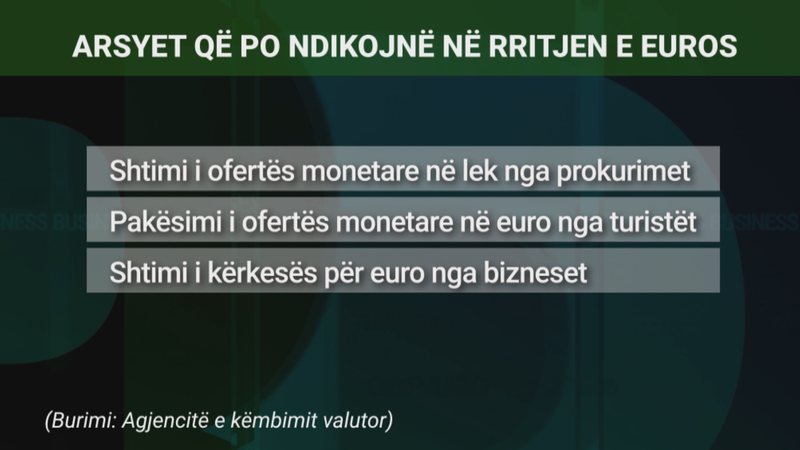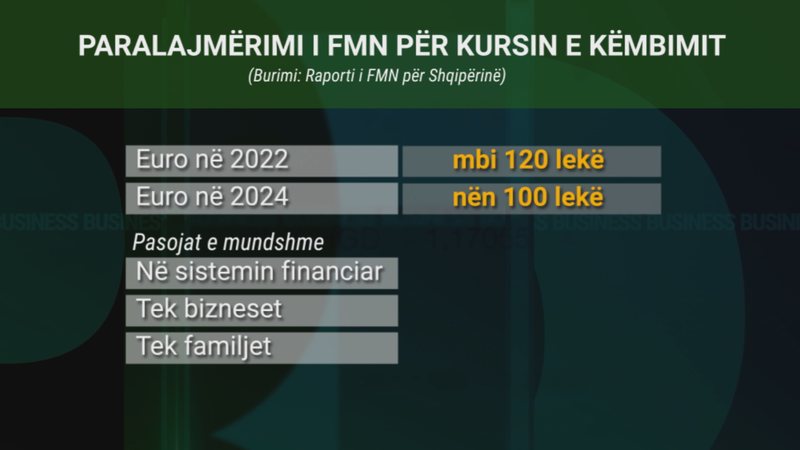The exchange rate has been subject to strange movements this week. All currencies have strengthened against the lek, but the euro has experienced the fastest growth.

The European currency has reached the 100 lek mark, appreciating by about 3 lek in the last few days alone. This is the highest level of the euro since July of last year. But how is this sudden strengthening of the euro explained? What are the reasons?

According to data from foreign exchange agencies, there is an increase in the amount of lek in the market, due to payments made by the government this month from the budget for end-of-year procurements. On the other hand, the amount of euros in circulation has shrunk, as there have been fewer tourists, also as a result of the worsening weather. In parallel, demand for euros has increased from businesses that have made purchases at the beginning of the season.
But will the euro's rise continue? A question worth $1 million, but the chances are for a possible strengthening, also considering the upcoming elections, which will increase the amount of lek in circulation. The International Monetary Fund has also reacted to the exchange rate performance.

In the report on Albania, published a few days ago, the IMF estimates that if the exchange rate were to take an unexpected turn, returning to the level of 2022, when the euro was over 120 lek, it would negatively affect the financial sector, businesses and households, through an increase in non-performing loans, considering that a large portion of loans are in foreign currency. (A2 Televizion)













